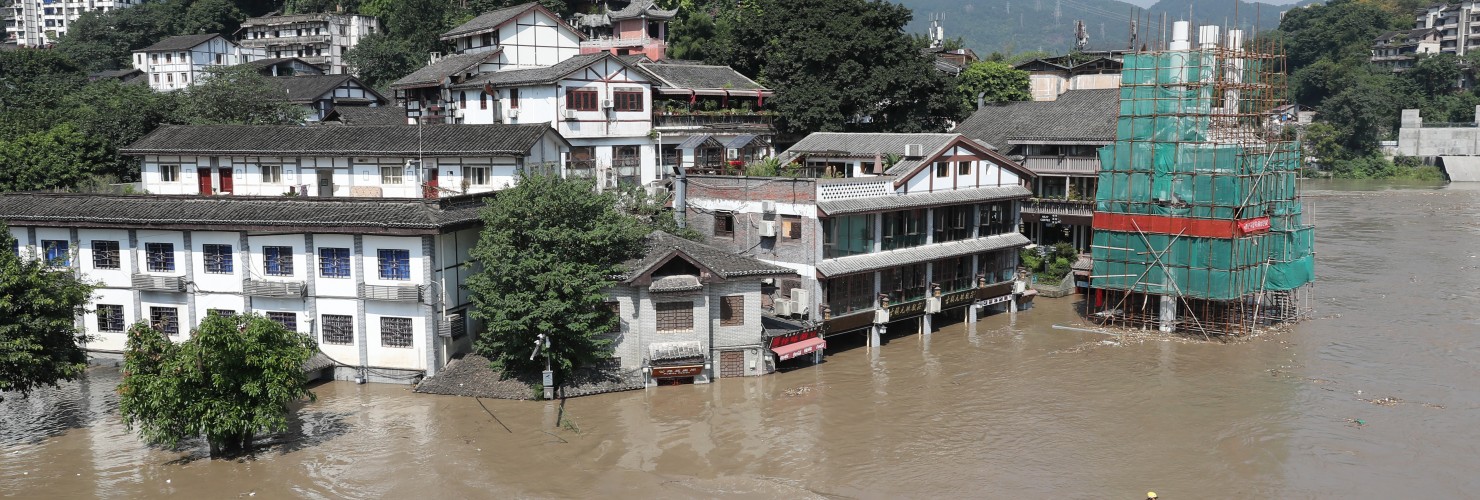

Wang Weiluo on China’s worst flooding in decades: “The damage floods do is growing”
Annual floods in China have already cost 158 lives, made 3.8 million people homeless and caused 144 billion yuan (17.5 billion euros) in economic damage, as the government reported at the end of July. Germany-based land-use expert Wang Weiluo last month even warned of the risk the Three Gorges Dam could collapse as a result of the water levels.
China is battling widespread flooding – some media have even talked about “the flood of the century”. How did it come about?
We currently don’t have comprehensive, transparent and verifiable information about this year’s flooding or about the damage it has caused. Most reports have come via social media. The situation is serious, but it is by no means the flood of the century. Water levels in Wuhan, for example, reached 28.77 meters above sea level on 12 July, which is lower than the 29.73 meters seen in 1954, the 29.43 meters seen in 1998 and the 28.89 meters seen in 1999. But the economic damage is much greater in 2020 than in the years before.
The problem is that for 70 years China has been focusing on dam construction as an instrument of water management and flood prevention. In 1949, there were about twenty dams and reservoirs in China. Today there are 98,000 dams and reservoirs in the country, more than half of which – some 52,000 – are in the Yangtze region. After the National People's Congress approved the Three Gorges Dam in 1992, hydroelectric power generation has grown rapidly under the banner of flood control. More and more wetlands, floodplains and lakes have been designated for the construction of housing and industry. Rivers have been narrowed and lake areas reduced. As a result, space for water has become increasingly scarce. It was believed that dams and reservoirs would prevent flooding. German technologies for flood protection – like those mobile metal barriers known from Cologne – are widespread in China. But new ideas like “living with floods”, “renaturalizing rivers”, or “giving water more space” aren’t.
There have been some very gloomy warnings about the course of the flood. What are the worst and the best things that could happen?
China’s economic reforms saw the rights to use dams and reservoirs privatized to relieve public finances. In the event of a flood, there is now a conflict between the economic interests of those with use rights and the public interest. Economic uses – electricity generation, water supply and irrigation – require the reservoirs to hold a lot of water. But in the event of a flood, the public interest requires the reservoirs to be emptied. Given the poor construction quality of many dams – including the Three Gorges Dam – the central government and many local governments are worried about dams failing.
So, the following priorities have emerged: first, dam safety; second, economic uses, directly tied to the interests of those with use rights; and only in third place, flood protection. As a result, events often unfold as follows. The industrial water users store as much water as possible, not least in the name of flood protection. Then the authorities or the users discover that the water volumes are endangering the dam. The authorities then order water to be drained – hopefully still in good time. In August 1963, more than 300 dams in Hebei Province failed – and the resulting damage has remained a state secret. In 1975, 62 dams broke in Henan province and 240,000 people died.
Let's go back to the reasons for the flooding. Given the Chinese government’s course, will it be able to tackle the root causes in a meaningful way?
The Chinese government has introduced a new system to fight flooding. It is based on personal responsibility – one official is in charge of every river, another of every river section, yet another of every lake. In addition, there are three people responsible for each dam and reservoir – the deputy head of the government that is responsible, the head of the government's water management department and the owner of the rights to use the dam. The names of these three people are published on the internet. President Xi Jinping has recently emphasized that these people are personally responsible and must help on the front lines. Secret checks are being undertaken to make sure they are obeying Xi's orders. Inspections of this type were effective during the coronavirus epidemic and Xi would like to see similar successes in flood prevention.
When the Communist Party came to power 70 years ago, Mao declared war on the Yangtze and other rivers as a prelude to controlling the water they carry. The technical means came with the dam-construction techniques introduced by the Soviet Union and the investments were immense. But floods are now ever more frequent and the damage they do is growing. As the Chinese government doesn’t tolerate any public discussion of water-management policy, don’t expect it to change course any time soon.
The interview was conducted by Gerrit Wiesmann.
This interview first appeared in the August 13 issue of our newsletter "MERICS China Briefing".